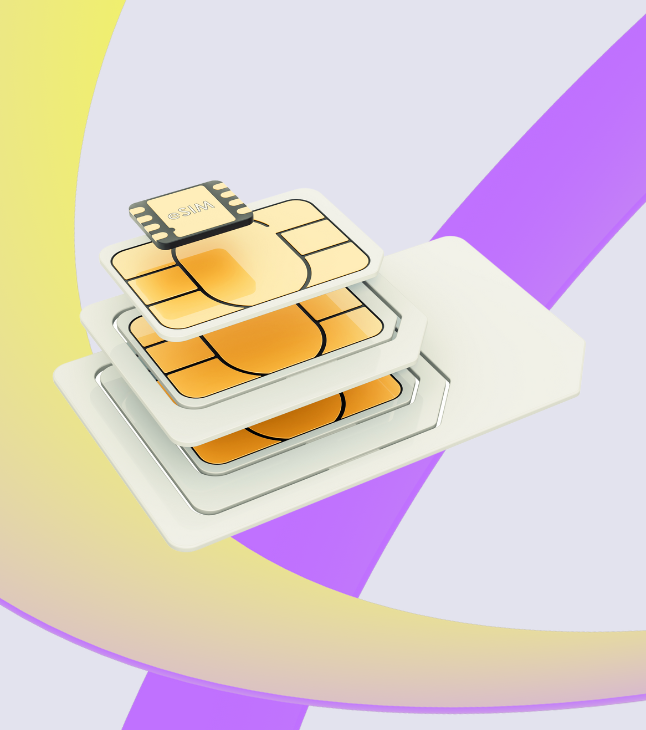Have you ever heard of an eSIM? It’s the latest in mobile connectivity technology, and it’s changing the game. In this article, we’ll break down what an eSIM is and how it’s different from traditional SIM cards. We’ll also go over the benefits of using an eSIM and why it’s the future of mobile connectivity.
The Internet of Things (IoT) revolution has brought about so many exciting advancements, including in the world of connectivity. And that’s where eSIMs come in – they’re the new, hot technology everyone is discussing! The global eSIM market is growing rapidly, with experts predicting a Compound Annual Growth Rate of 16.42% from 2020 to 2028. That means by 2028, the market is estimated to be worth as much as $25.8 billion! It’s amazing to think about the impact that eSIMs are having in the world of IoT, and the future looks even brighter for this innovative technology.
What is an electronic SIM (eSIM)?
First things first, let’s talk about what an eSIM actually is. An eSIM, or Embedded SIM, or in other words recognized by its form factor – MFF2, is a tiny chip that is integrated into your device and provides a permanent connection to mobile networks. This means you don’t have to switch out physical SIM cards like we used to. In the same way, as you might know, 2FF (Mini-SIM), 3FF (Micro SIM), 4FF (Nano-SIM), and eSIM (MFF2) is other upgraded with time and technology development versions of SIM cards as we know them. Except for this one, being embedded in the device makes it nearly impossible to be physically removed.
Now, you might have heard the term “eUICC” thrown around as well. This stands for Embedded Universal Integrated Circuit Card, and it’s a technology standard that enables the over-the-air provisioning of mobile network operator profiles to your device—confused yet? Don’t worry; the important thing to know is that the eUICC can work with an eSIM, but it can also work with all available traditional SIM cards like Nano, Micro, etc.
In simplified form:
“eUICC is the software which allows provisioning,
When the eSIM = the whole service (which includes: MFF2 SIM + eUICC + platform),
which might be seen as hardware.”

Difference between SIM, eSIM, eUICC, and UICC
SIM, eSIM, UICC, and eUICC are all related to mobile connectivity, but they each serve a different purpose.
How does a standard SIM card work?
A SIM, or Subscriber Identity Module, is a physical card that connects to a mobile network. A physical SIM card is carried separately in addition to the device. Every different carrier provides its unique physical card to any user, and it is activated to be used with a particular cellular device after review and approval. These cards are non-programmable Over-the-Air (OTA) and must be changed as per the desired carrier. They come in standard, micro, and nano sizes.
How do eSIMs work?
An eSIM, on the other hand, is an embedded chip that is integrated directly into a device and provides a permanent connection to mobile networks without needing a physical SIM card. eSIM has been around for quite a while. In fact, eSIM was invented around the late 1990s and was popularly implemented first by IBM into their IBM ThinkPad X41 laptop device. eSIM has been used in various mobile, tablet, laptops, and smart IoT devices, allowing IoT devices to stay connected with a wireless carrier. eSIMs are small and require less space than a traditional SIM card. However, despite the benefits, eSIM has been very popular recently. As more and more devices need more space for other components than the SIM.
What is UICC?
The Universal Integrated Circuit Card (UICC) does way much more than identify your mobile device. It can store various data types like your contact list, manage mobile data usage, and allow data roaming across different mobile networks. It’s like a little computer that runs the SIM application and helps your device connect to the internet and other mobile devices.
What is eUICC?
The eUICC, or Embedded Universal Integrated Circuit Card, is a technology standard that enables the over-the-air provisioning of mobile network operator profiles (up to 24 profiles!) to a device. It can work with both an eSIM (MFF2) and a traditional SIM card (Micro SIM, Nano SIM etc.).
Simply put, the SIM card is the physical component that provides mobile connectivity, the eSIM is the technology that replaces it, and the eUICC is the standard that enables the over-the-air provisioning of network profiles to a device.
What are the benefits of using an eSIM instead of a traditional SIM card?
Well, for starters, an eSIM with eUICC capabilities makes switching between mobile networks a breeze. No more fiddling around with physical SIM cards; you can change your network provider through a remote provisioning platform Over-The-Air (OTA). It also makes your device more compact, as there’s no need for a SIM card slot, leaving more space for other components.
Another benefit of eSIM is its improved security. The SIM card information is stored directly on your device, making it much harder for unauthorized access or hacking than traditional SIM cards that can be lost or stolen.
In conclusion, eSIM technology is the future of mobile connectivity. With its many benefits, including ease of use and improved security, it’s no wonder that more and more devices are incorporating this technology. Whether you’re a consumer or a business user, it’s essential to understand the differences between eSIM and eUICC and how they transform how we connect to mobile networks. So next time you’re in the market for a new device, be sure to look for one with an eSIM!
Benefits of using an eSIM card in IoT devices
The debate between eSIM vs. physical SIM cards is an ever-growing one. However, when it comes to IoT devices, eSIM definitely has a set of benefits over physical SIM cards:
- Miniature chip design and smaller form factor allow eSIM to be used in smaller, water-proof devices.
- Cheaper customer onboarding costs for the carriers, allowing better margins in large-scale needs.
- The convenience of no need for physical installations or offline service center support.
- Excellent safety by reducing any scope for tampering or cloning.
- Far more durable compared to plastic SIM cards.
Cons of using eSIM in IoT devices
Is eSIM better than physical cards in every aspect of IoT device connectivity? There are certainly some areas where physical SIM cards can compete with eSIM, such as:
- Physical SIM cards are easily available for all carriers
- Physical cards are widely acclaimed with smartphones, tablets, and dongles worldwide compared to eSIMs.
- eSIM can result in additional device production costs, increasing the overall cost of the product.
How to use an eSIM card?
Of course, the first step in using an eSIM card is to get a compatible device. It can be a wearable, a smartphone, or any other IoT device. This eSIM card must register for a wireless network provider with a relevant service plan by following the registration process with an activation key or QR code.
A particular eSIM must be set up as per the device configurations. If done right, one can receive the network, exchange the data, and perform cellular actions, just like accessing a physical SIM card.
The future of eSIM
Currently, provisioning eUICCs is pretty easy when you have access to a device with a screen/camera because it allows you to make a picture of the QR.
For IoT Devices, the implementation is a bit more difficult because you have no interface that allows you to make a picture of a QR. In the next couple of months, there is the hope that a new standard (which will be announced in the middle of 2023) will resolve those issues for IoT devices.
eSIM cards can present more value to smaller IoT devices with screens/cameras by making them easy to program and use with any network. At Freeeway, we help clients equip their end users with the best IoT connectivity solutions. Connect now, and let’s discuss your ideal SIM card provision!
Your form entry has been saved and a unique link has been created which you can access to resume this form.
Enter your email address to receive the link via email. Alternatively, you can copy and save the link below.
Please note, this link should not be shared and will expire in 30 days, afterwards your form entry will be deleted.




